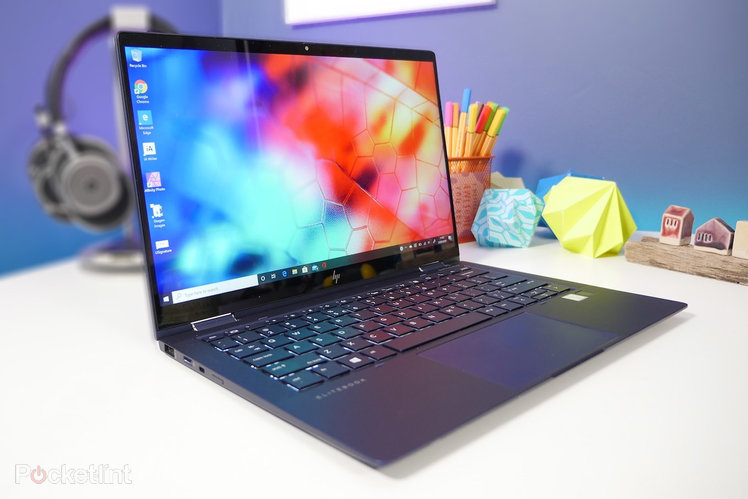
For years the world of enterprise laptops was a sea of boring black plastic. Even as the consumer market moved toward svelte and lightweight, businesses were still rolling out old bricks to staff.
But there’s been a shift from manufacturers to get laptops with the same reliability, security encryption options and durability as before, but in designs you’re not embarrassed to whip out at your public coffee shop.
This is where the Elite Dragonfly comes in. One of HP’s recent laptops has all the benefits required for mass rollout for enterprise customers, but in a form that’s attractive, slim and lightweight.
Design
- Build: Magnesium alloy & recycled ocean plastics
- Measures: Under 20mm thick / Weighs: Under 1kg
- Ports: 2x USB-C (Thunderbolt 3), 1x USB-A, 1x HDMI 1.4, 1x 3.5mm jack
There’s a lot to like about HP’s approach to design on the Elite Dragonfly. The manufacturer’s primary aim of creating a machine that’s both lightweight and practical has certainly been achieved. Depending which variant you go for, the laptop weighs somewhere in the region of 1kg. It’s slim too, measuring comfortably under 20mm when shut. It’s easy to fit into virtually any bag, since it takes up relatively little space.
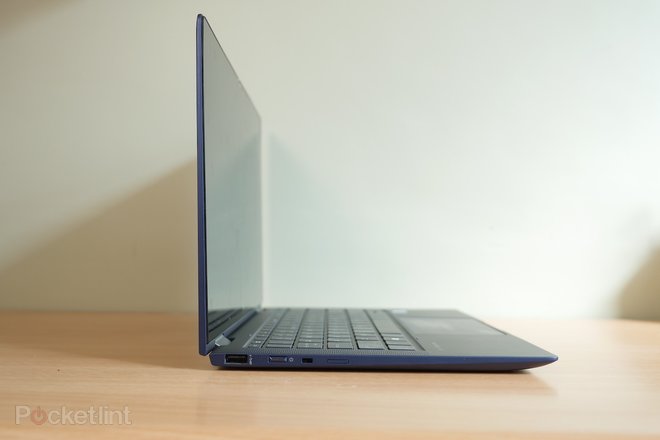
It’s worth noting that it is thicker than a MacBook Pro – even if it is narrower – but that slight extra thickness does mean HP has managed to fit in a whole host of useful ports and connections. You get two Thunderbolt USB-C ports, but in addition there’s a full USB-A port on the left side, and a full-sized HDMI 1.4 port on the other as well as a 3.5mm port for external microphones and wired headphones.
HP has used a magnesium alloy to build the chassis, making it both lightweight and durable. Its thinly painted finish gives it a nice soft-touch texture and stops it from feeling cold and metallic. For the plastic elements, HP has used recycled ocean plastics.
In fact, HP has designed almost the entire laptop to be recyclable when the time comes for the notebook to be sent away to the great laptop farm in the sky. Naturally, this isn’t something you can do yourself by just taking it apart and taking it to your local recycling plant. Rather, you need to send it in to HP directly or take it to an authorised partner.
From an aesthetic standpoint, HP has certainly gone down the minimalist path with this business-focused laptop. The outer cover is a single colour and finish with a simple, modern HP logo in the middle. Look around any part of the laptop and the same approach is taken. There’s very little in the way of extra accent colours, lines or contours. It’s simplistic, in a good way.
Saying that, there are speaker grilles on either side of the keyboard made with triangular clusters of tiny holes put together in a repeating tiled pattern. There are also silver accents on the screen hinges. But that’s it.
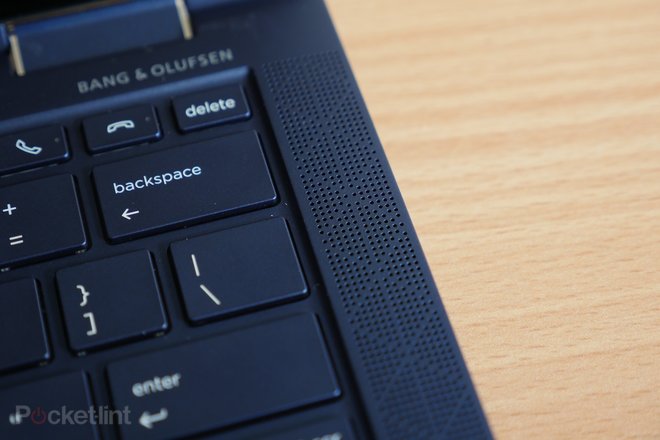
Everything else is just a soft, matte ‘Dragonfly Blue’, which is somewhere between slate and navy blue. And that soft matte finish is designed to help avoid excessive fingerprint smudges. For the most part, it’s effective, but after a few weeks of no wiping, there are definitely some patches where finger oils have made an impression. Still, it’s easy enough to wipe clean again.
Practical versatility?
- 360-degree hinge: Laptop, Tent, Tablet, Stand modes
- Built-in fingerprint sensor for biometric login
- Webcam cover for added security
HP’s Elite Dragonfly is what the manufacturer classes as a 360-degree convertible laptop/tablet. The reason being those hinges on the display mean the screen can be rotated almost a full 360-degrees from closed, into a tablet mode.
The hinges themselves are relatively stiff, which is good for holding its shape with the display at virtually any angle, but does mean that opening one-handed isn’t really possible. Those strong hinges along with the lightweight nature of the chassis mean you need to hold the base down before lifting the display.
Rotated all the way around, the laptop can be set to automatically launch into tablet mode. In this Windows mode, touch-optimised elements become available, like the all touch onscreen keyboard for typing. You also get HP Pen-optimised features, like a screenshot feature that allows you to instantly markup any screenshot you take or the doodle pad for drawing.
The other thing that happens in tablet mode is the general user interface is adapted to make it more touch-friendly, by making the Start menu grid or list views completely full screen – reminding us a little of the interface offered in Windows 8 RT all those years ago. Similarly, a lot of the apps default to full screen and the regular desktop home screen vanishes. It’s just you and your apps.
As with every 2-in-1-style device with a rotating screen, you also have the ability to lie it completely flat, or have the laptop in tent or stand mode, for when you just want to watch movies. The content on the screen automatically rotates when it detects the display upside down in this mode.
The Elite Dragonfly’s practicality isn’t just about giving you a screen that flips over though. HP has also enabled practical elements for the security conscious, including a fingerprint sensor for authentication/unlocking and a webcam cover that you can easily slide over when you’re not making video calls.
However, the fingerprint sensor itself hasn’t been the most reliable part of the laptop. Often times we’ve had to place our finger on it two or three times before it recognises and unlocks the laptop, seemingly not even noticing we’ve actually placed a finger on it at all.
Typing on the keyboard above it, on the other hand, is generally a pleasant experience. The keys are completely square, with a good amount of travel and subtle feedback. If we had any criticism, it’s that they’re a little softer than we’d like. We’d like a tiny bit more ‘click’.
The trackpad isn’t quite as pleasant to use, though, mostly down to the learning of getting accustomed to its default settings. We often found ourselves accidentally wiping chunks of text out of a document, or right-clicking and highlighting instead of left-clicking. After a few days we became accustomed to its sensitivity and didn’t make the same mistakes, so it wasn’t something we constantly struggled with. We adjusted the sensitivity of the trackpad to aid our operation too.
Display
- 13.3-inch IPS LCD display, 16:9 aspect ratio
- 4K / Full HD resolution options
- Touchscreen w/ Pen support
On our particular review unit, HP stuck in a 4K resolution panel, which means it’s genuinely a great visual experience. You get clean whites and natural colours, but also being an IPS display means the viewing angles are good. Even if you have the screen set to a fairly shallow angle, you can clearly read text and see details without any excessive colour shifting or cloudiness.
If you’re looking at a spreadsheet or text document, thin lines and fine details will appear crisp and sharp. With brightness set to maximum, the white document backgrounds appear brilliant white too, so from a pure productivity point of view everything looks great. Except for one thing: the screen aspect ratio.
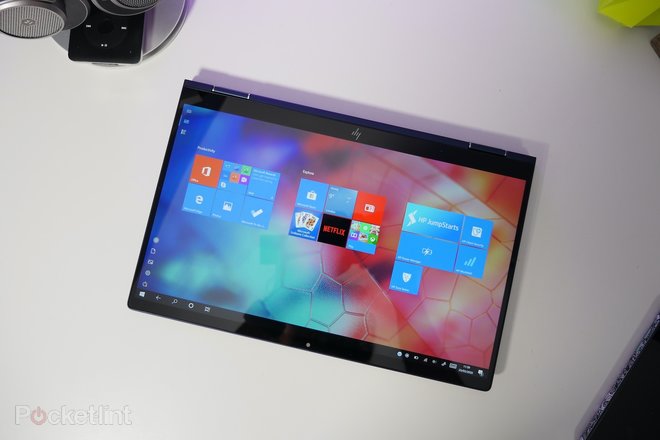
Despite being a business/work focussed laptop, HP put in a 16:9 aspect display, not a taller 3:2 one. That means it’s quite narrow. If you have the display scale reduced to make more space, it’s not such a big deal, although that can mean that text in menus and apps can appear a bit too small. We found, when using Chrome for a lot of our work, we had to hide the bookmarks bar and have the Windows taskbar automatically vanish to make room.
Having a touchscreen also adds an extra element of usefulness, especially when you want to scroll, swipe or pinch-to-zoom more quickly. And – of course – being narrow and wide, the screen is great for watching movies and TV shows. Although, you’re more than likely to see one of these machines in a working business environment where watching the latest season of Westworld isn’t on the agenda.
Battery and performance
- 8th Gen Intel Core i5 processor, 16GB RAM
- 500GB SSD storage
As for daily performance and battery, the HP Elite Dragonfly really excels. Even driving that 4K display our unit was zippy and fast the entire time, whether we were editing photos for a review or simply typing up words. Our particular unit also had 16GB RAM and a 500GB solid state storage drive – other configurations are available.
Since most of the kind of work we do involves editing photos and videos that we’ve shot, it was nice to have a so-called ‘business’ laptop that could easily handle editing large images in Affinity Photo without struggling.
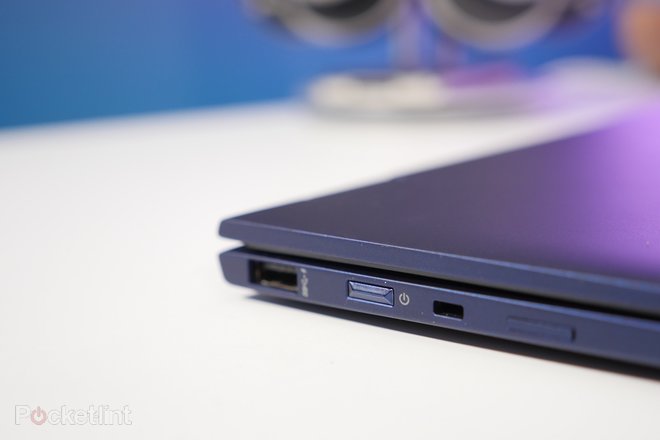
Battery life is similarly consistent, with most days of use passing without the need to charge it up. Depending on how powerful a model you get is, and which screen it’s got, the battery hardware will differ, but we’ve not once struggled to get eight hours of use before needing it to be plugged in. In fact, it can probably go further than that when battery saver options are enabled.
